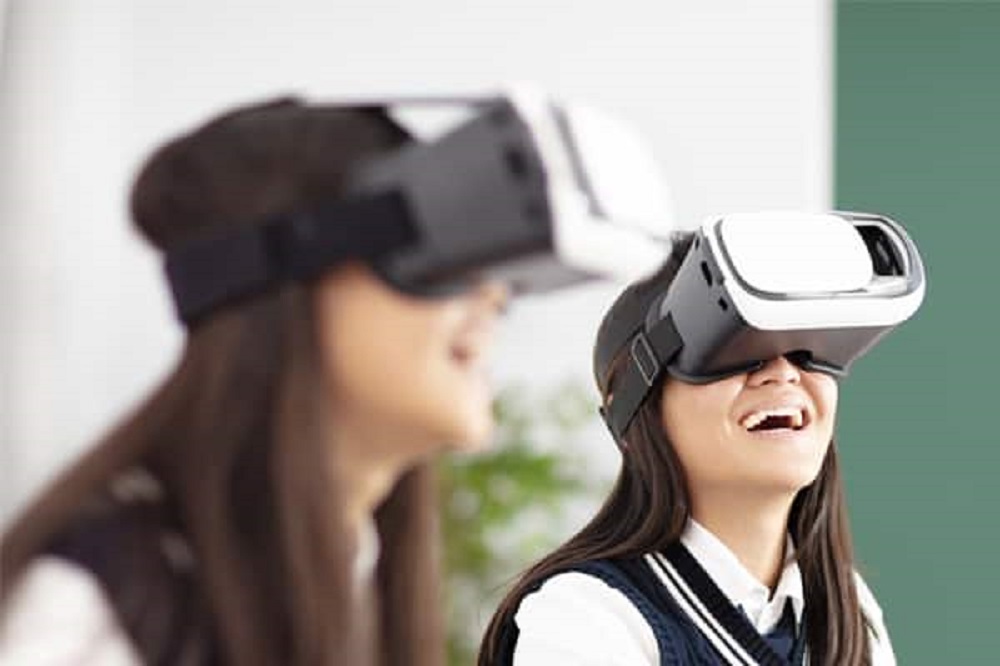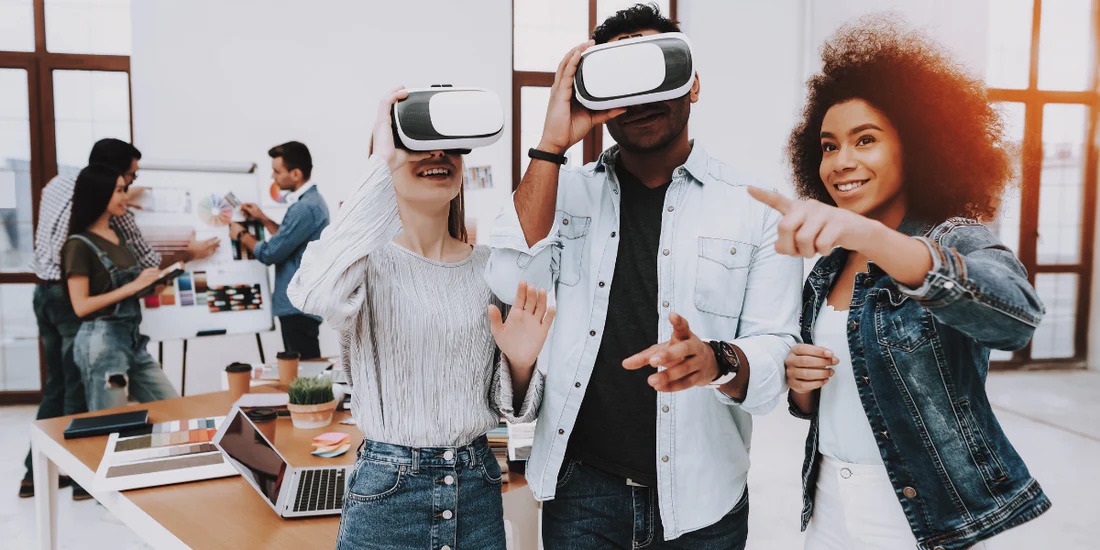Virtual reality has become an ever-evolving technology, and it still has a lot of applications yet to be explored. From entertainment to education, virtual reality is an effective way of immersing learners into different settings. One of the major reasons why schools and universities are integrating virtual reality into their learning processes is because of the benefits it provides. It can help students experience things more realistically, improve retention, and expand learners’ world view.
Virtual reality also comes with numerous benefits for teachers as well. However, knowing the various benefits of virtual reality in education and learning can be difficult. To make things easier for you, we’ve created a comprehensive list of benefits of virtual reality that you can use to convince your school or university administration to use VR in your classes or training programs. So without further ado, let’s get into how virtual reality can revolutionize education!

Virtual Reality in the Classroom
– Virtual reality can be used to enhance learning experiences in a variety of ways.
– It can be used to create more engaging and immersive learning environments, for example. This allows students to experience lifelike simulations that are easy to lose track of time while learning.
– virtual reality can also be used to help students develop better spatial reasoning skills. This is particularly valuable for students who are learning mathematics or science, as it can help them practice these concepts and develop the necessary skills for mastering them.
– virtual reality can be used to improve memory recall and comprehension. Instead of reading from a book or watching a lecture, students can experience these content materials directly through virtual reality technology. This allows them to gain a deeper understanding of the material and use their imagination more effectively when reviewing it.
-As you can see, virtual reality offers numerous benefits for both students and teachers when used intelligently in the classroom.
What is virtual reality learning?
-Virtual reality learning is a type of educational experience that involves students experiencing a simulated environment that provides them with a realistic experience of real-world situations.
– It can be used to improve educational experiences, training programs, and business simulations.
– Virtual reality learning can help students learn new information more effectively and remember it longer.
– The learning can help students develop problem-solving skills and critical thinking skills.
– Virtual reality learning has the potential to promote cross-cultural understanding and collaboration.
– There are several benefits of virtual reality learning, including the ability to provide students with immersive experiences that can stimulate their interest in learning and foster creative thinking.
The technology has many benefits for both students and teachers, making it an exciting learning tool for years to come.
Examples of Virtual Reality in Schools by Subject
– Math and science: Virtual-reality simulations can be used to teach subjects like geometry, calculus, physics, and other scientific concepts.
– English: With virtual reality, users can experience realistic environments that help them understand and practice reading comprehension, vocabulary, and grammar skills.
– History: Using virtual reality simulations, students can learn about historical events in immersive ways.
– Art: Virtual reality can be used to create realistic art installations and sculptures.
– Music: Using virtual reality headsets, students can learn how to play various instruments and sing along with music tracks.
– Other subjects: Using virtual reality in schools, teachers can easily interact with students in immersive ways to enhance their learning experiences.
Benefits of using virtual reality in education
Virtual reality offers a wide range of benefits to learners of all ages, including the ability to experience high-quality simulations of real-world environments, develop problem-solving skills, and enhance learning by providing immersive experiences. With virtual reality, students can learn in new and innovative ways that are impossible with conventional means. For example, virtual reality can be used to create virtual worlds that immerse students in educational topics and experiences of interest.
By using virtual reality, students can practice performing real-world tasks or take part in educational trips. Additionally, virtual reality provides a safe environment for students to experiment with their avatars and explore new ideas without fear of making mistakes or hurting themselves. The technology also helps students retain information more effectively since they aren’t limited by real-world constraints. Overall, the benefits of using virtual reality in education make it an important tool for student development and learning.
Benefits of using virtual reality in training
– Virtual reality training can help you learn new concepts faster and more effectively.
– It can help reduce the amount of learning required for certain courses.
– Virtual reality can help you retain information better.
– It can help improve teamwork skills.
– Virtual reality can help trainees simulate real-world situations in training.
– This way, they could learn from real-world experience without having to be there in person. This is beneficial for developing cross-cultural skills or learning a new skill under challenging conditions. The many benefits of virtual reality in training are clear, but it is important to consider the costs and benefits of any educational tool before making a final decision.
How can virtual reality help students?
– Virtual reality can help students learn new material more effectively.
– Virtual-reality technology offers a way for students to experience different environments, scenarios, and digital objects without the limitations of real-world settings. This has the potential to improve learning outcomes by encouraging deeper engagement and absorption of content. For example, virtual-reality simulations can be used in education to help students better understand real-world issues, such as climate change or natural disasters. Additionally, virtual-reality technology can be utilized for training purposes, especially for those involved in fields such as medicine or the military.
– In addition, virtual reality has been shown to significantly enhance learning outcomes for students with special needs. Through the use of sensory deprivation technologies such as goggles and headphones, students with disabilities can immerse themselves in various virtual worlds without the limitations of their physical world. This opens up an entire world of possibilities that would otherwise be inaccessible.
– Lastly, virtual reality is also being used in educational institutions and homes as an immersive learning tool. Through this technology, students can interact with digital objects and simulations and develop critical thinking skills and problem-solving capabilities.
How can virtual reality improve education?
-Virtual reality can improve education in a variety of ways, from allowing learners to experience different kinds of classrooms and learning environments, to helping them learn new material efficiently and effectively.
-Using virtual reality technology can enhance learning experiences by letting students experience real-world scenarios in immersive virtual environments. This can help students better understand the concepts they’re learning, which can lead to improved retention. Besides, virtual reality technology can make learning fun and engaging, motivating students to stay engaged throughout their education journey.
-Lastly, using virtual reality technology can help students find creative solutions to problems while learning new information. This is because it allows learners to manipulate digital environments and characters to explore various ideas and ideas quickly and easily.
Virtual reality is an effective way to enhance education experiences for both children and adults.
Conclusion
It is clear that virtual reality has a lot of potential for students, teachers, and learning. It can enhance learning by immersing learners in realistic settings or simulations that feel more real than the real world. Furthermore, it allows learners to experience different types of learning environments and can help improve retention of information and improve overall comprehension. Comment below and share your thoughts on virtual reality education. Tell us if you’ve used VR in your classroom and how it helped you.

